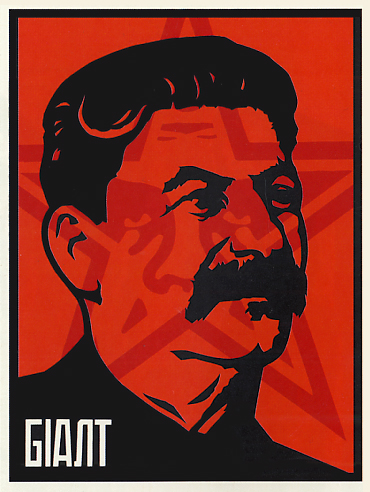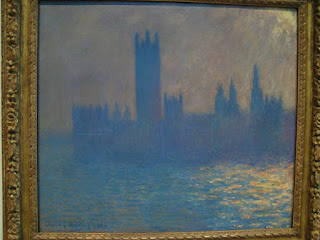Yes, man is a comical animal, and there’s obviously a joke in all this. Still, I say that twice two [makes four] is an unbearable notion, an arrogant imposition. This twice two image stands there, hands in pockets, in the middle of your road, and spits in your direction. Nevertheless, I’m willing to agree that twice-two-makes-four is a thing of beauty. But, If we’re going to praise everything like that, then I say that twice-two-makes-five is also a delightful little item now and then.
What prose! The mingling of abstraction and concrete imagery! The immediate, sneering tone! And is it too much to think ‘twice-two-makes-five’ as a form of individual revolt, was the basis of Orwell’s reworking of that formulation as a summation of totalitarian’s absolute mastery over the individual? The delight that swaths of our current population takes in this sort of brute counterfactualism ("Keep the government out of my Medicare!") need hardly be mentioned. Nihilism scarce had a better apologist than the Underground Man of the Notes' first section.
The second half is less effective, though I would like to think this is by design. For the first half is entirely theoretical and, on its own terms, quite effective; we may not like the Underground Man, but damn if we don’t respect his crude integrity. The second half puts this philosophy of ultra-pessimism into action in several case studies—a desire to get an officer’s attention, a sadomasochistic imposition on his schoolmates’ dinner, the emotional manipulation of a beautiful young prostitute—and all of them find the Underground Man to be increasingly repulsive and, more important, impotent. The caustic wit of the first half is almost comically helpless against his irrational compulsion to debase himself before people whom he holds in the highest contempt, who couldn’t care less about him anyway. What before seemed a compelling if distasteful stance against faith in progress is revealed to be an ineffectual and embarrassing revel in one’s own misery.
Misery was key to Dostoyevsky’s outlook, of course. His later novels (Crime and Punishment is the only other I have read) go on to develop the notion of man’s bestial nature and its only hope lying in divine salvation. What is striking about Notes is the almost complete absence of this notion of penance. The Underground Man expounds on it at length in his discourse with the prostitute Liza, and it is on these precepts that she ostensibly begins to turn her life around. But the Underground Man repudiates everything he’s told her as soon as he has said so, and his failure to go after her in the end is painted as a grotesque redemption of sorts:
“And isn’t it much better,” I mused later, back at home, trying to soothe the living pain with my fantasies, “for her to bear this humiliation as long as she lives, because humiliation is purification, because it causes the most corrosive, the most painful awareness? I’d have soiled her soul and tired her heart no later than tomorrow, but this insult and humiliation will never be extinguished in her; whatever filth surrounds her, my insult will elevate her, purify her through… through hatred… well… maybe through forgiveness…. But will it really be easier for her now?”
No. But let me ask a question now on my own behalf: what’s better—cheap happiness or lofty suffering?* Well, tell me—which of the two is better?
The Dostoyevsky of later years would seem to elect the former—-after having stewed plentifully in the latter, to be sure. Following several days of guilt-fueled delirium, Crime and Punishment’s Raskolnikov finds solace in another woman, Sonya Marmeladova, and the two of them await their reunion that will follow when his sentence in Siberia has been served. Dostoyevsky was all about redemption through suffering, but in this work, at the beginning of his mature period, the only reason one seems to stand any chance of improvement and moral regeneration is by rejecting false saviors, and even that’s hardly a guarantee. It’s all suffering and no redemption.
That is why I find it hard to believe the Underground Man’s stance is meant to be taken at face value. The especially acid outlook on human existence he conveys has been thought to be a function of Dostoyevsky’s personal distresses at the time of its writing, but it could also be he intended we be seduced by the Underground Man’s anti-philosophy, in order to more acutely understand the dead ends—the inherent stagnation—it leads to when practically applied. I suspect a mixture of the two, that at that point in his life Dostoyevsky felt this pessimism quite intensely but also knew that, taken to its logical conclusion, it could only terminate in bootless misanthropy, that there must be a better solution to the problem of man’s baseness.
On those grounds, I think Yglesias’ description of Notes From Underground as “an illustration of the power of great writing to convey radically unsound or even totally nonsensical ideas” doesn’t give the author quite enough credit. But then again, Dostoyevsky was a very damaged individual; perhaps he meant it all, and, fittingly, I am not giving enough credence to the man’s irrationality.
*Sartre considered Notes a seminal text in Existentialism, so it is not at all surprising to see in this line a precursor to Hamm's "Can there be misery loftier than mine?" in Beckett's Endgame.




























